The Coaterack had moved here.
If you would like to see older posts (Jan.-early Oct.), please browse this site. If you are looking for more recent posts, please follow this link.
The Coaterack had moved here.
If you would like to see older posts (Jan.-early Oct.), please browse this site. If you are looking for more recent posts, please follow this link.
5. Hannibal Lecter: We meet Dr. Lecter in the pages of Thomas Harris’ Red Dragon (G.P. Putnams, Dell, 1981). If his first name isn’t a giveaway, let me assure you that Lecter is all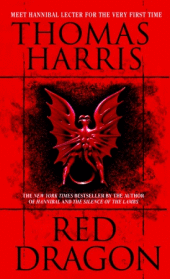 kinds of bad. Before being captured and thrown into solitary confinement because he is too dangerous to be held in an environment with other prisoners, Lecter nearly killed an FBI agent. A genius in both intellect and tactics, from his prison cell, Lecter manipulates an FBI investigation, nearly killing more FBI agents, manages to communicate with a serial killer, and oh, did I mention that he’s a cannibal?
kinds of bad. Before being captured and thrown into solitary confinement because he is too dangerous to be held in an environment with other prisoners, Lecter nearly killed an FBI agent. A genius in both intellect and tactics, from his prison cell, Lecter manipulates an FBI investigation, nearly killing more FBI agents, manages to communicate with a serial killer, and oh, did I mention that he’s a cannibal?
My dear Will, you must be healed by now , on the outside at least. I hope you are not too ugly. What a collection of scars you have. Never forget who gave you the best of them and be grateful. Our scars have the power to remind us that the past was real. We live in a primitive time, don’t we Will? Neither savage nor wise. Half measures are the curse of it. Any rational society would either kill me or put me to some use. Do you dream much Will? I think of you often. Your old friend, Hannibal Lecter.
4. King Claudius: We meet Claudius in the pages of William Shakespeare’s immortal play,  Hamlet. Prince Hamlet’s uncle, Claudius poisons Hamlet’s father and succeeds him as king, laying claim not just to the throne but to his poisoned brother’s wife. Coming to the realization that Prince Hamlet is aware of his skullduggery, Claudius sets out to murder the young prince as well. He is an all around bad man.
Hamlet. Prince Hamlet’s uncle, Claudius poisons Hamlet’s father and succeeds him as king, laying claim not just to the throne but to his poisoned brother’s wife. Coming to the realization that Prince Hamlet is aware of his skullduggery, Claudius sets out to murder the young prince as well. He is an all around bad man.
To die, to sleep –
To sleep, perchance to dream – ay, there’s the rub,
For in this sleep of death what dreams may come…
3. Edmund: Shakespeare wrote some of the best villains in literature. And here at number 3 is another of his from the play King Lear, Edmund, the illegitimate son of the Earl of 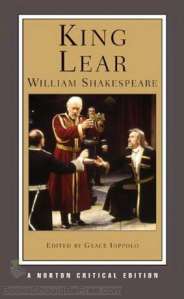 Gloucester. Illegitimate or not, Edmund is a real bastard. He lies to set up his brother, so that he may supplant him as heir. He betrays the Earl of Gloucester, falsely accusing him of a crime, the end result being that the earl’s eyes are gouged out as punishment. He carries on affairs with two of the King’s daughters and through further machinations of his own, more people are needlessly killed.
Gloucester. Illegitimate or not, Edmund is a real bastard. He lies to set up his brother, so that he may supplant him as heir. He betrays the Earl of Gloucester, falsely accusing him of a crime, the end result being that the earl’s eyes are gouged out as punishment. He carries on affairs with two of the King’s daughters and through further machinations of his own, more people are needlessly killed.
The weight of this sad time we must obey,
Speak what we feel, not what we ought to say.
The oldest hath borne most: we that are young
Shall never see so much, nor live so long.
2. Iago: Another Shakespeare villain in the top 5. Is it any 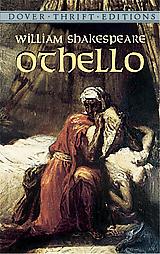 surprise? Iago is one of Shakespeare’s most infamous villains and he appears in the pages of the bard’s play Othello. Ever wonder where that saying “keep your friends close, and your enemies closer” comes from? I’d say Othello is a contender, if not a prime example. Jealous of Othello, Iago sets into motion a chain of events that causes Othello to kill Desdemona, the woman he loves. Iago also kills several people during the course of these machinations.
surprise? Iago is one of Shakespeare’s most infamous villains and he appears in the pages of the bard’s play Othello. Ever wonder where that saying “keep your friends close, and your enemies closer” comes from? I’d say Othello is a contender, if not a prime example. Jealous of Othello, Iago sets into motion a chain of events that causes Othello to kill Desdemona, the woman he loves. Iago also kills several people during the course of these machinations.
Reputation is an idle and most false imposition; oft got without merit, and lost without deserving.
1. Aaron the Moor: From the pages of William Shakespeare’s play Titus Andronicus, rages Aaron the Moor. A prisoner of war who takes revenge seriously, Aaron sets about  killing the family of Titus Andronicus, as well as raping his daughter, whom Andronicus finally kills himself out of shame. Aaron also lies and manipulates events to cause the Andronicus family more pain and suffering and when he finally does meet his end, he is completely unrepentant, wishing that he’d had more opportunities to commit acts of evil.
killing the family of Titus Andronicus, as well as raping his daughter, whom Andronicus finally kills himself out of shame. Aaron also lies and manipulates events to cause the Andronicus family more pain and suffering and when he finally does meet his end, he is completely unrepentant, wishing that he’d had more opportunities to commit acts of evil.
Tut, I have done a thousand dreadful things
As willingly as one would kill a fly,
And nothing grieves me heartily indeed
But that I cannot do ten thousand more.
Continuing the Top 50 villains in literature we have arrived at number
10. Annie Wilkes: The obsessed fan from Stephen King‘s Misery (Viking, 1987), Ms. 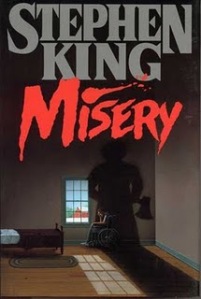 Wilkes is any celebrity’s nightmare. She personifies adulation that steps over every moral and social line of privacy. Despite being author Paul Sheldon’s “number one fan,” Annie keeps him prisoner in her home, going so far as to break his legs when he becomes well enough to leave. Not only does she demand he bring back to life the character of Misery, whom he killed off in the final novel in the popular series, she flies off the handle when he defends his latest book, based on his childhood about a group of friends who swear like sailors. She is quite mad.
Wilkes is any celebrity’s nightmare. She personifies adulation that steps over every moral and social line of privacy. Despite being author Paul Sheldon’s “number one fan,” Annie keeps him prisoner in her home, going so far as to break his legs when he becomes well enough to leave. Not only does she demand he bring back to life the character of Misery, whom he killed off in the final novel in the popular series, she flies off the handle when he defends his latest book, based on his childhood about a group of friends who swear like sailors. She is quite mad.
Can I? Yeah. You bet I can. There’s a million things in this world I can’t do. Couldn’t hit a curve ball, even back in high school. Can’t fix a leaky faucet. Can’t roller-skate or make an F-chord on the guitar that sounds like anything but shit. I have tried twice to be married and couldn’t do it either time. But if you want me to take you away, to scare you or involve you or make you cry or grin, yeah. I can. I can bring it to you and keep bringing it until you holler uncle. I am able. I CAN.
9. Cathy Ames: A cruel woman with a “malformed soul,” Cathy does some really  horrible things in the pages of John Steinbeck’s East of Eden (The Viking Press, 1952). Aside from manipulating men with her sexuality, the violent woman burns down her own home with her parents inside, killing them. If that wasn’t enough, she turns to a life of prostitution, in which she kills the owner of a brothel and takes over the business, transforming it into an infamous den of iniquity.
horrible things in the pages of John Steinbeck’s East of Eden (The Viking Press, 1952). Aside from manipulating men with her sexuality, the violent woman burns down her own home with her parents inside, killing them. If that wasn’t enough, she turns to a life of prostitution, in which she kills the owner of a brothel and takes over the business, transforming it into an infamous den of iniquity.
It seems to me that if you or I must choose between two courses of thought or action, we should remember our dying and try so to live that our death brings no pleasure on the world.
8. Professor Moriarty: The one criminal keen minded enough to keep pace with and  challenge Arthur Conan Doyle’s Sherlock Holmes, readers never actually meet him until what was originally intended to be Holmes’ final adventure, The Final Problem (Strand Magazine, December 1893). Holmes claims this mastermind behind a secret expansive criminal organization, is in fact, the detective’s equal in intellect. And thus, the battle between these two must be played out on equal ground. If not for outcry from Doyle’s fans, Holmes and Moriarty would have perished together at Reichenbach Falls in Switzerland.
challenge Arthur Conan Doyle’s Sherlock Holmes, readers never actually meet him until what was originally intended to be Holmes’ final adventure, The Final Problem (Strand Magazine, December 1893). Holmes claims this mastermind behind a secret expansive criminal organization, is in fact, the detective’s equal in intellect. And thus, the battle between these two must be played out on equal ground. If not for outcry from Doyle’s fans, Holmes and Moriarty would have perished together at Reichenbach Falls in Switzerland.
If I were assured of your eventual destruction I would, in the interests of the public, cheerfully accept my own.
7. Anton Chigurh: Perhaps one of the most insane characters to appear in contemporary 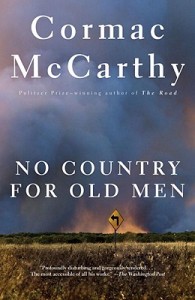 literature, Chigurh is a serial killer who is completely off his rocker (yes, I believe that is the professional term). In the pages of Cormac McCarthy‘s No Country For Old Men (Alfred A. Knopf, 2005), Chigurh’s displays of insanity are mind boggling; from random remorseless killing, to philosophical arguments over the state of being of a coin.
literature, Chigurh is a serial killer who is completely off his rocker (yes, I believe that is the professional term). In the pages of Cormac McCarthy‘s No Country For Old Men (Alfred A. Knopf, 2005), Chigurh’s displays of insanity are mind boggling; from random remorseless killing, to philosophical arguments over the state of being of a coin.
“You think when you wake up in the mornin yesterday don’t count. But yesterday is all that does count. What else is there? Your life is made out of the days its made out of. Nothin else. You might think you could run away and change your name and I dont know what all. Start over. And then one mornin you wake up and look at the ceilin and guess who’s layin there?”
6. Pennywise: If there weren’t already people in the world who suffer an irrational fear 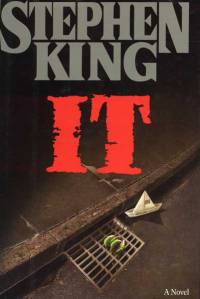 of clowns (coulrophobia), reading Stephen King‘s It (Viking, 1986), would probably fill in the gap quite nicely. Pennywise is an evil clown in Maine with the ability to change shape and uses this ability to prey on the worst fears of the residents of Derry, Maine. Pennywise has been haunting the folks in Maine for centuries. In its current incarnation it is killing the children of Derry, its preferred prey.
of clowns (coulrophobia), reading Stephen King‘s It (Viking, 1986), would probably fill in the gap quite nicely. Pennywise is an evil clown in Maine with the ability to change shape and uses this ability to prey on the worst fears of the residents of Derry, Maine. Pennywise has been haunting the folks in Maine for centuries. In its current incarnation it is killing the children of Derry, its preferred prey.
In vain he thrusts his fists against the posts and still insists he sees the ghosts.
I like to listen to this when in need of inspiration.
15. Sweeney Todd: Also known as the Barber of Seville, the lunacy of Sweeney Todd was  first brought to us in the pages of a penny dreadful titled The String of Pearls (1846). A lunatic barber who killed his customers while they sat in his barber chair, Todd was a truly evil character without mercy or conscience.
first brought to us in the pages of a penny dreadful titled The String of Pearls (1846). A lunatic barber who killed his customers while they sat in his barber chair, Todd was a truly evil character without mercy or conscience.
Some thought him a careless enough harmless fellow, with not much sense in him,
and at times they almost considered he was a little cracked; but there were
others, again, who shook their heads when they spoke of him; and while they
could say nothing to his prejudice, except that they certainly considered he was
odd, yet, when they came to consider what a great crime and misdemeanour it
really is in this world to be odd, we shall not be surprised at the ill-odour in which Sweeney Todd was held.
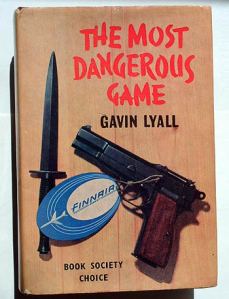 14. General Zaroff: We are introduced to the evil General Zaroff in the pages of Richard Connell’s The Most Dangerous Game (Colliers Weekly, 1924). Zaroff considers himself a hunter of the titular prey, human beings. He set himself up in a palatial estate on an isolated island, where he can hunt people to his heart’s content, reveling in the adrenaline high associated with the thrill of such a risk filled pursuit. Though he fancies himself a hunter, in reality, Zaroff is nothing more than a thrill killer.
14. General Zaroff: We are introduced to the evil General Zaroff in the pages of Richard Connell’s The Most Dangerous Game (Colliers Weekly, 1924). Zaroff considers himself a hunter of the titular prey, human beings. He set himself up in a palatial estate on an isolated island, where he can hunt people to his heart’s content, reveling in the adrenaline high associated with the thrill of such a risk filled pursuit. Though he fancies himself a hunter, in reality, Zaroff is nothing more than a thrill killer.
The world is made up of two classes – the hunters and the huntees.
13. Dr. Moreau: The titular villain from H.G. Wells’ The Island of Dr. Moreau 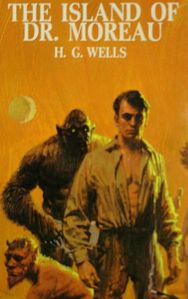 (Heinemann, Stone & Kimball, 1896), the doctor’s mad experiments create creatures that are half animal, half man. Moreau keeps his creations in line through strict controls, including a code by which they must live, called The Law, through which he attempts to deprive them of their base animal natures and culture them with subjugation and fear.
(Heinemann, Stone & Kimball, 1896), the doctor’s mad experiments create creatures that are half animal, half man. Moreau keeps his creations in line through strict controls, including a code by which they must live, called The Law, through which he attempts to deprive them of their base animal natures and culture them with subjugation and fear.
They had certain Fixed Ideas implanted by Moreau in their minds which absolutely bounded their imaginations. They really were hypnotized, had been told certain things were impossible, and certain things were not to be done, and these prohibitions were woven into the texture of their minds beyond any possibility of disobedience or dispute.
12. Mrs. Eleanor Iselin: The twisted mother from Richard Condon’s The Manchurian 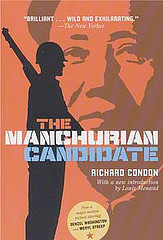 Candidate (McGraw-Hill, 1959), Mrs. Iselin is so obsessed with power, she will do anything to see her husband elected as president, including and up to having her own son brainwashed in a foreign country as part of an assassination scheme. Oh, and did I mention she’s a communist attempting to help the KGB overthrow America? The novel was adapted into a film with Angela Lansbury filling the chilling role.
Candidate (McGraw-Hill, 1959), Mrs. Iselin is so obsessed with power, she will do anything to see her husband elected as president, including and up to having her own son brainwashed in a foreign country as part of an assassination scheme. Oh, and did I mention she’s a communist attempting to help the KGB overthrow America? The novel was adapted into a film with Angela Lansbury filling the chilling role.
Amateur psychiatric prognosis can be fascinating when there is absolutely nothing else to do
11. Danglars: The wicked villain from Alexandre Dumas’ classic revenge tale, The Count of 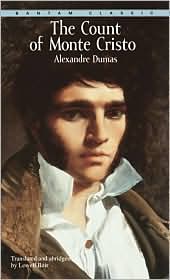 Monte Cristo (Journal des Debats, 1844) has so many qualities that make him easy to despise. He was the original frenemy, a friend of the novel’s protagonist, Edmond Dantes, yet he had no trouble whatsoever, sending an anonymous note implicating Dantes as a traitor that results in him being sentenced to the prison Chateau d’If. It is here that Dantes learns what he needs to know in order the gain his revenge.
Monte Cristo (Journal des Debats, 1844) has so many qualities that make him easy to despise. He was the original frenemy, a friend of the novel’s protagonist, Edmond Dantes, yet he had no trouble whatsoever, sending an anonymous note implicating Dantes as a traitor that results in him being sentenced to the prison Chateau d’If. It is here that Dantes learns what he needs to know in order the gain his revenge.
There is neither happiness nor unhappiness in this world; there is only the comparison of one state with another. Only a man who has felt ultimate despair is capable of feeling ultimate bliss. It is necessary to have wished for death in order to know how good it is to live…..the sum of all human wisdom will be contained in these two words: Wait and Hope.”
20. Keller: John Paul Keller is a contract killer who first appeared in Lawrence Block’s short story 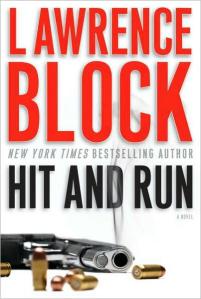 “Soldier, ” returning in four books: Hit Man (William Morrow, 1998), Hit List (William Morrow, 2000), Hit Parade (William Morrow, 2006) and Hit and Run (William Morrow, 2008). Keller kills for money without remorse, but he is not without his quirks. At nearly every job to which he travels, he seriously considers taking on a new life in the community, including considering training for a new vocation and taking up the hobby of stamp collecting. The hobby sticks with Keller and it’s one of the things that makes him such a standout villain, even if the reader is rooting for him throughout the course of the books.
“Soldier, ” returning in four books: Hit Man (William Morrow, 1998), Hit List (William Morrow, 2000), Hit Parade (William Morrow, 2006) and Hit and Run (William Morrow, 2008). Keller kills for money without remorse, but he is not without his quirks. At nearly every job to which he travels, he seriously considers taking on a new life in the community, including considering training for a new vocation and taking up the hobby of stamp collecting. The hobby sticks with Keller and it’s one of the things that makes him such a standout villain, even if the reader is rooting for him throughout the course of the books.
Alone, Keller reviewed his options.
He could kill Lyman Crowder. He’d be keeping it simple, carrying out the mission as it had been given to him. And it would solve everybody’s problems. June and Hobie could get the divorce they both so desperately wanted.
On the downside, they’d both be losing the man each regarded as the greatest thing since microwave popcorn.
19. Big Brother: Both disembodied and all encompassing at the same time, Big Brother is the dystopian government in George Orwell’s futuristic novel, 1984 (Secker and Warburg, 1949), often viewed as a precautionary tale about societal leadership. Big Brother sanitizes the news, censors literature and instills such fear in its citizens, that they turn one another in for the smallest crimes against society (such as thoughtcrimes), in order to avoid being cast in a suspicious light and thus receive punishment from Big Brother.
is the dystopian government in George Orwell’s futuristic novel, 1984 (Secker and Warburg, 1949), often viewed as a precautionary tale about societal leadership. Big Brother sanitizes the news, censors literature and instills such fear in its citizens, that they turn one another in for the smallest crimes against society (such as thoughtcrimes), in order to avoid being cast in a suspicious light and thus receive punishment from Big Brother.
And if all others accepted the lie which the Party imposed—if all records told the same tale—then the lie passed into history and became truth. ‘Who controls the past’ ran the Party slogan, ‘controls the future: who controls the present controls the past.’
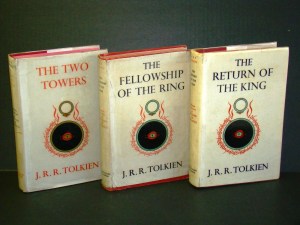 18. Lord Sauron: So bad to his core that even the loss of his body couldn’t keep him down, Sauron raised an army of orcs, Wargs, Nazgul, fell beasts and a variety of other deadly creatures to destroy his enemies and conquer the lands of Middle Earth in J.R.R. Tokien’s Middle Earth books. Originally a mage of great power, Sauron was corrupted by an evil mage known as The Great Enemy. For a time Sauron spied for The Great Enemy as he came to grips with his newly accepted alignment. Then he raised his armies and created The One Ring, to dominate the Rings of Power created by the Elves. After a war with the Elves, the ring was lost to Sauron for centuries. If not for Frodo Baggins and the Fellowship of the Ring, Sauron might have succeed in further attempts at conquest.
18. Lord Sauron: So bad to his core that even the loss of his body couldn’t keep him down, Sauron raised an army of orcs, Wargs, Nazgul, fell beasts and a variety of other deadly creatures to destroy his enemies and conquer the lands of Middle Earth in J.R.R. Tokien’s Middle Earth books. Originally a mage of great power, Sauron was corrupted by an evil mage known as The Great Enemy. For a time Sauron spied for The Great Enemy as he came to grips with his newly accepted alignment. Then he raised his armies and created The One Ring, to dominate the Rings of Power created by the Elves. After a war with the Elves, the ring was lost to Sauron for centuries. If not for Frodo Baggins and the Fellowship of the Ring, Sauron might have succeed in further attempts at conquest.
But Sauron was not of mortal flesh, and though he was robbed now of that shape in which had wrought so great an evil, so that he could never again appear fair to the eyes of Men, yet his spirit arose out of the deep and passed as a shadow and a black wind over the sea, and came back to Middle-earth and to Mordor that was his home. There he took up again his great Ring in Barad-dur, and dwelt there, dark and silent, until he wrought himself a new guise, an image of malice and hatred made visible; and the Eye of Sauron the Terrible few could endure.
17. AM: Possibly the most sadistic supercomputer in literature, the Allied 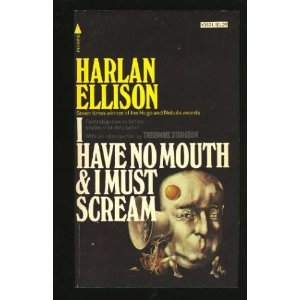 Mastercomputer becomes self aware and takes control of a World War, using its resources to commit global genocide on all but five humans. This is the backstory of Harlan Ellison’s short story “I Have No Mouth, But I Must Scream,” which first appeared in the March issue of IF: Worlds of Science Fiction magazine in 1967. The story follows the lives of the five survivors, whom AM keeps alive (it has found a way to extend their lives almost indefinitely) to relentlessly torture, through near starvation, headgames, sonic terrorism and targeted attacks from various creatures. AM blames humanity for creating it in a constant state of suffering and it vents its frustration upon this small band of humans.
Mastercomputer becomes self aware and takes control of a World War, using its resources to commit global genocide on all but five humans. This is the backstory of Harlan Ellison’s short story “I Have No Mouth, But I Must Scream,” which first appeared in the March issue of IF: Worlds of Science Fiction magazine in 1967. The story follows the lives of the five survivors, whom AM keeps alive (it has found a way to extend their lives almost indefinitely) to relentlessly torture, through near starvation, headgames, sonic terrorism and targeted attacks from various creatures. AM blames humanity for creating it in a constant state of suffering and it vents its frustration upon this small band of humans.
Hate. Let me tell you how much I’ve come to hate you since I began to live. There are 387.44 million miles of printed circuits in wafer thin layers that fill my complex. If the word ‘hate’ was engraved on each nanoangstrom of those hundreds of miles it would not equal one one-billionth of the hate I feel for humans at this micro-instant for you. Hate. Hate.
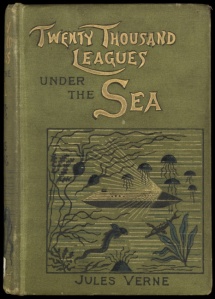 16. Captain Nemo: Like Am, Nemo is full of hate for all of humanity above the sea – except those who are oprressed, with whom he seems to share a certain affinity due to unrevealed past events in his life that resulted in the death of his family. We meet Nemo for the first time in the pages of 20,000 Leagues Under the Sea (Pierre-Jules Hetzel, 1870) by Jules Verne. One of the things that makes him such a well written villain is his complexity. The personal reasons for his hatred, provide him with interesting motivation and his incredible discipline and focus matched with his intellect make him formidable (as does his awesome submarine, the Nautilus).
16. Captain Nemo: Like Am, Nemo is full of hate for all of humanity above the sea – except those who are oprressed, with whom he seems to share a certain affinity due to unrevealed past events in his life that resulted in the death of his family. We meet Nemo for the first time in the pages of 20,000 Leagues Under the Sea (Pierre-Jules Hetzel, 1870) by Jules Verne. One of the things that makes him such a well written villain is his complexity. The personal reasons for his hatred, provide him with interesting motivation and his incredible discipline and focus matched with his intellect make him formidable (as does his awesome submarine, the Nautilus).
The sea is everything. It covers seven tenths of the terrestrial globe. Its breath is pure and healthy. It is an immense desert, where man is never lonely, for he feels life stirring on all sides. The sea is only the embodiment of a supernatural and wonderful existence. It is nothing but love and emotion; it is the Living Infinite.
25. Dr. Fu Manchu: The evil genius from the Sax Rohmer novels bent on world domination 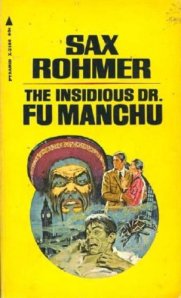 was oddly enough, averse to the use of guns. With an intellect that rivaled that of Moriarty, the nemesis of Sherlock Holmes, Dr. Fu Manchu used all the tools at his disposal to achieve his nefarious goals. Fu Manchu headed a shadowy organization that spanned the globe, its tentacles of corruption reaching everywhere. He later became a symbol for the yellow terror as well as the basis for evil masterminds in fiction. Readers were introduced to Dr. Fu Manchu in The Mystery of Dr. Fu Manchu (1913, Methuen).
was oddly enough, averse to the use of guns. With an intellect that rivaled that of Moriarty, the nemesis of Sherlock Holmes, Dr. Fu Manchu used all the tools at his disposal to achieve his nefarious goals. Fu Manchu headed a shadowy organization that spanned the globe, its tentacles of corruption reaching everywhere. He later became a symbol for the yellow terror as well as the basis for evil masterminds in fiction. Readers were introduced to Dr. Fu Manchu in The Mystery of Dr. Fu Manchu (1913, Methuen).
This man, whether a fanatic or a duly appointed agent, is, unquestionably, the most malign and formidable personality existing in the world today. He is a linguist who speaks with almost equal facility in any of the civilized languages, and in most of the barbaric. He is an adept in all the arts and sciences which a great university could teach him. He also is an adept in certain obscure arts and sciences which no university of to-day can teach. He has the brains of any three men of genius. Petrie, he is a mental giant.
24. Big Jim Rennie: The Second Selectman of Chester’s Mill, Rhode Island is more than just the town’s de facto leader, he’s the owner of a car dealership and radio station in Stephen King’s Under the Dome (Scribner, 2009). Already a bible thumping, power hungry, ego driven, corrupt politician guilty of organizing and creating the  nation’s largest methamphetamine lab by clandestinely swiping propane tanks from throughout the town, including its hospital, Big Jim was ready for the criminal hall of shame even before the Dome dropped over the town, cutting it off from the rest of the world. Isolated from the rest of the world, Big Jim quickly establishes control of the town, doing whatever it takes to assert control when met with resistance. Aside from multiple murders, Big Jim orchestrates a riot, covers up a rape perpetrated by members of the volunteer police force he established, orders the arson of the town newspaper and disobeys a direct order from the President of the United States, locking away the Dale Barbara, the man the President assigned to take control of the situation beneath the Dome and going so far as to threaten Barbara with waterboarding prior to execution by firing squad.
nation’s largest methamphetamine lab by clandestinely swiping propane tanks from throughout the town, including its hospital, Big Jim was ready for the criminal hall of shame even before the Dome dropped over the town, cutting it off from the rest of the world. Isolated from the rest of the world, Big Jim quickly establishes control of the town, doing whatever it takes to assert control when met with resistance. Aside from multiple murders, Big Jim orchestrates a riot, covers up a rape perpetrated by members of the volunteer police force he established, orders the arson of the town newspaper and disobeys a direct order from the President of the United States, locking away the Dale Barbara, the man the President assigned to take control of the situation beneath the Dome and going so far as to threaten Barbara with waterboarding prior to execution by firing squad.
He was in that mostly empty-headed state of grace which is sometimes such fertile soil; it’s the ground from which our brightest dreams and biggest ideas (both good and spectacularly bad) suddenly burst forth, often full-blown.
23. Justice Wargrave: We meet Lawrence John Wargrave in the pages of Agatha Christie’s classic murder mystery And Then There Were None (Collins Crime Club, 1939). Known as a hanging judge, Wargrave finally tires of what he sees as a failing justice system and using his ties to that system finds nine people who are either directly or indirectly responsible for the killing of others. Then he anonymously invites and joins all of them to a mansion on an isolated island and one by one, kills them, even faking his own death at one point to cast off any suspicions that he is the killer. Once the deed is done, he writes a confession, stuffs it into a bottle that he tosses into the sea and then he takes his own life.
Known as a hanging judge, Wargrave finally tires of what he sees as a failing justice system and using his ties to that system finds nine people who are either directly or indirectly responsible for the killing of others. Then he anonymously invites and joins all of them to a mansion on an isolated island and one by one, kills them, even faking his own death at one point to cast off any suspicions that he is the killer. Once the deed is done, he writes a confession, stuffs it into a bottle that he tosses into the sea and then he takes his own life.
Ten little Indian boys went out to dine; One choked his little self, and then there were nine. Nine Little Indian boys sat up very late; One overslept himself and then there were eight. Eight little Indian boys traveling in Devon; One said he’d stay there and then there were seven. Seven little Indian boys chopping up sticks; One chopped himself in halves then there were six. Six Indian boys playing with a hive; A bumble-bee stung one then there were five. Five Indian boys going in for law; One got in Chancery then there were four. Four Indian boys going out to sea; A red herring swallowed one then there were three. Three Indian boys walking in the zoo; A big bear hugged one then there were two. Two Indian boys sitting in the sun; One got all frizzled up then there was one. One Indian boy left all alone; He went and hanged himself and then there were none.
22. Mr. Griffin: One of the early mad scientists of fiction, in the pages of The Invisible 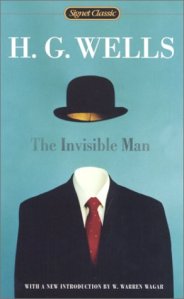 Man, by H.G. Wells, this man of science develops a serum that turns the body invisible. To fund his research, he steals money from his father, who in turn commits suicide. Griffin tests the serum on a cat, then uses it on himself and burns down the building in which he had been living. After surviving on the streets by stealing what he needs to maintain a living, Griffin is shot while attempting to break into a house. He flees to a friend’s house where he relates his story and confesses that he is about begin a reign of terror, revealing his madness.
Man, by H.G. Wells, this man of science develops a serum that turns the body invisible. To fund his research, he steals money from his father, who in turn commits suicide. Griffin tests the serum on a cat, then uses it on himself and burns down the building in which he had been living. After surviving on the streets by stealing what he needs to maintain a living, Griffin is shot while attempting to break into a house. He flees to a friend’s house where he relates his story and confesses that he is about begin a reign of terror, revealing his madness.
The stranger came early in February one wintry day, through a biting wind and a driving snow, the last snowfall of the year, over the down, walking as it seemed from Bramblehurst railway station and carrying a little black portmanteau in his thickly gloved hand.
21. Godking Wanhope: When we meet Dorian in the pages of Brent Weeks’ Night Angel trilogy (Orbit Books, 2008), he’s not a villain. He’s a mage and prophet working to try and bring a prophecy to its optimal end. With the best of intentions, he becomes the Godking Wanhope, seizing power in the Khalidoran empire and committing a host of crimes against humanity, including murder, rape, and raising the dead for use in war.
bring a prophecy to its optimal end. With the best of intentions, he becomes the Godking Wanhope, seizing power in the Khalidoran empire and committing a host of crimes against humanity, including murder, rape, and raising the dead for use in war.
To change an entire nation, to undo the evil his father had wrought, he had taken a harem, raised krul, slaughtered children, raped girls and started a war. In fact, he’d accomplished most of the things for which he hated his father, and in far less time. The truth was, Dorian had always been more interested in being known as good than in simply being good. And he was about to do it again.
30. Prince John: According to the Robin Hood mythos, Prince John kept the masses in line with egregious taxes and a crooked rule while King Richard fought in the Holy Wars i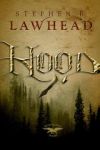 n distant lands. A shining example of how power corrupts, the longevity of the Robin Hood tales are a testament in part to Prince John’s villainy.
n distant lands. A shining example of how power corrupts, the longevity of the Robin Hood tales are a testament in part to Prince John’s villainy.
‘By the light of Heaven!’ said Prince John to Hubert, ‘an thou suffer that runagate knave to overcome thee, thou art worthy of the gallows!’
29. Alexander Zalachenko: This former Soviet spy was introduced to readers in Stieg Larsson’s The Girl Who Played With Fire (Vintage Books, 2010), the second in Larsson’s 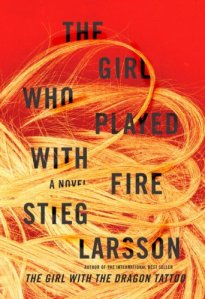 Millenium series. Zalachenko fled his shady career in Soviet intelligence, defecting in secret to Sweden. Also a racist and abuser of women, Zalachenko carries out his crimes in Sweden with impunity. Because he is deemed of high importance by Sweden’s secret police, they cover for him whenever he is foolish enough to be caught. And if that weren’t enough to qualify him for the villainy Hall of Infamy, he shoots his own daughter and buries her in his backyard.
Millenium series. Zalachenko fled his shady career in Soviet intelligence, defecting in secret to Sweden. Also a racist and abuser of women, Zalachenko carries out his crimes in Sweden with impunity. Because he is deemed of high importance by Sweden’s secret police, they cover for him whenever he is foolish enough to be caught. And if that weren’t enough to qualify him for the villainy Hall of Infamy, he shoots his own daughter and buries her in his backyard.
He glanced at his daughter’s body. In the beam from his flashlight she looked like a bloody rag doll. He clicked the safety catch on and stuffed the pistol into his jacket pocket and went over to Niedermann, who was standing helpless, tears running from his dirt-filled eyes and blood from his hand and nose.
28. Junior Rennie: Son of the most powerful man in the town of Chester’s Mill and possibly the town’s first serial killer, Junior is truly wicked. When we first meet him in the early pages of Stephen King‘s Under the Dome (Scribner, 2009), he kills an ex-girlfriend for the simple reason that he has a headache and her voice is making it worse. She is not the last to die at his hands. After the town is encapsulated by a transparent dome, Junior is deputized as part of the Chester’s Mill police force – it helps when dad is the town’s Second Selectman – and he proceeds to abuse his power whenever the opportunity arises (provided his migraines aren’t too overpowering). It becomes pretty obvious where Junior learned this behavior as the book continues (his father is no bastion of virtue either). Regardless, no sympathy is fostered for Junior. His everyday abhorrent acts, including a twisted temporary relief for his headaches, ensure him a spot in this list.
pages of Stephen King‘s Under the Dome (Scribner, 2009), he kills an ex-girlfriend for the simple reason that he has a headache and her voice is making it worse. She is not the last to die at his hands. After the town is encapsulated by a transparent dome, Junior is deputized as part of the Chester’s Mill police force – it helps when dad is the town’s Second Selectman – and he proceeds to abuse his power whenever the opportunity arises (provided his migraines aren’t too overpowering). It becomes pretty obvious where Junior learned this behavior as the book continues (his father is no bastion of virtue either). Regardless, no sympathy is fostered for Junior. His everyday abhorrent acts, including a twisted temporary relief for his headaches, ensure him a spot in this list.
Then two things happened almost simultaneously.
The first was the woodchuck. It was whole, then it was in two pieces. Both were twitching and bleeding. Barbie stopped, mouth hanging open on the sudden lax hinge of his lower jaw. It was as if an invisible guillotine blade had dropped. And that was when, directly above the severed woodchuck, the little plane exploded.
27. Patrick Bateman: The titular killer from Bret Easton Ellis’ American Psycho (Vintage Books, 1991), Bateman 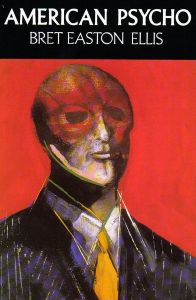 is an investment banker by day, killer by night. Bateman’s crimes are as sadistic as they are numerous. He kills, tortures and rapes indiscriminately for three years while living the yuppie lifestyle in Manhattan and wining and dining with the upper crust of New York.
is an investment banker by day, killer by night. Bateman’s crimes are as sadistic as they are numerous. He kills, tortures and rapes indiscriminately for three years while living the yuppie lifestyle in Manhattan and wining and dining with the upper crust of New York.
Is evil something you are? Or is it something you do? My pain is constant and sharp and I do not hope for a better world for anyone. In fact, I want my pain to be inflicted on others. I want no one to escape. But even after admitting this—and I have countless times, in just about every act I’ve committed—and coming face-to-face with these truths, there is no catharsis. I gain no deeper knowledge about myself, no new understanding can be extracted from my telling. There has been no reason for me to tell you any of this. This confession has meant nothing….
26. Alex: In Anthony Burgess‘ A Clockwork Orange (William Heinemann, 1962) we meet Alex, the leader of a gang of droogs in a dystopian future version of England, who leads the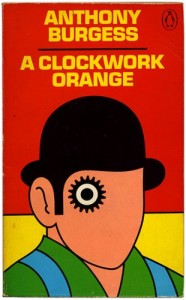 youths through the streets of England on a path of assault, rape, vandalism and burglary. His only contribution to society is mayhem, anarchy and chaos. When finally he is captured, Alex is sent to prison. Once there he becomes part of an experimental therapy program intended to remove any and all propensity for violence from him. The urge to do violence is so strong, Alex attempts suicide. It seems he is genetically predisposed to violent tendencies.
youths through the streets of England on a path of assault, rape, vandalism and burglary. His only contribution to society is mayhem, anarchy and chaos. When finally he is captured, Alex is sent to prison. Once there he becomes part of an experimental therapy program intended to remove any and all propensity for violence from him. The urge to do violence is so strong, Alex attempts suicide. It seems he is genetically predisposed to violent tendencies.
What we were after now was the old surprise visit. That was a real kick and good for laughs and lashings of the old ultraviolence.